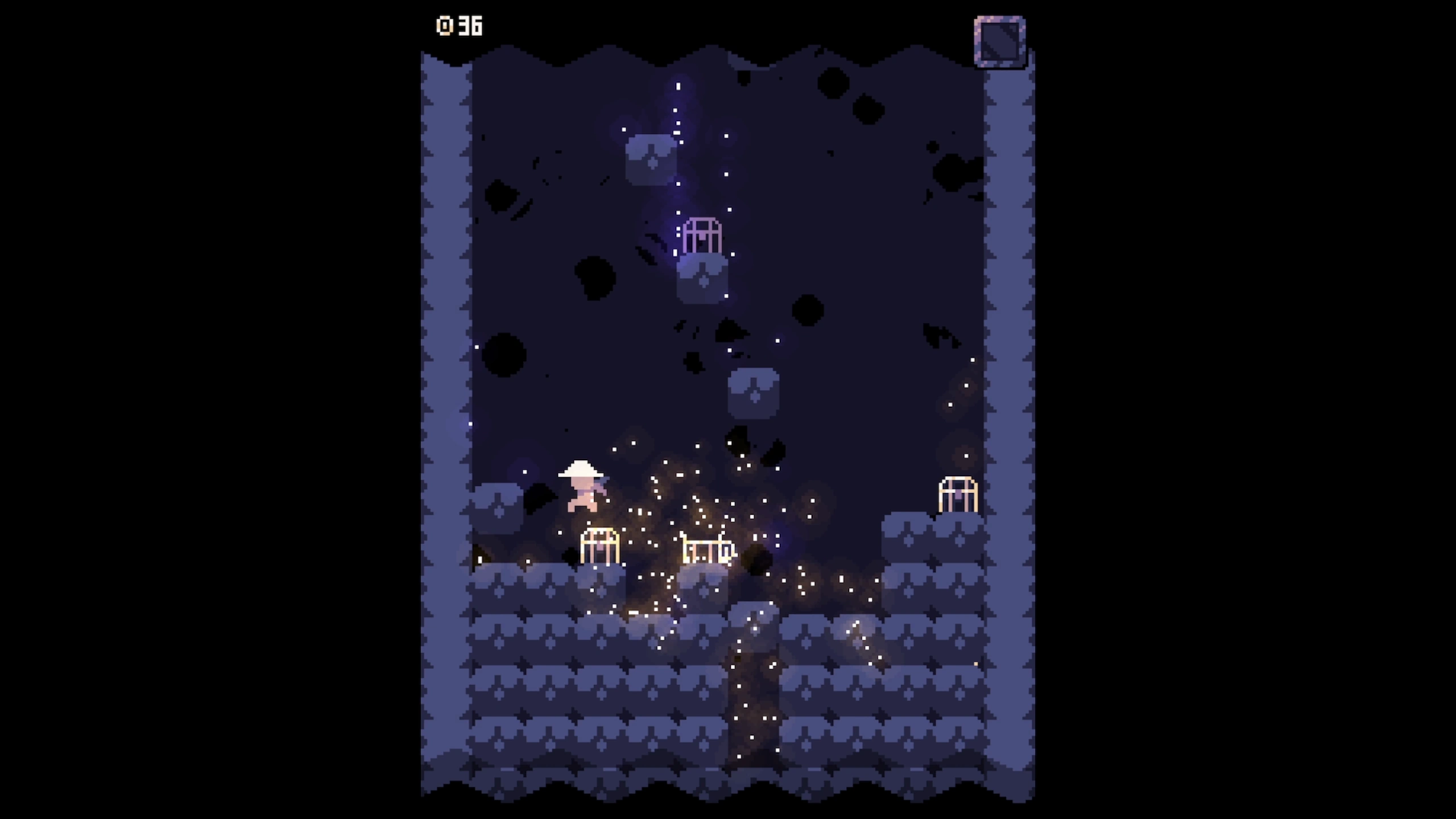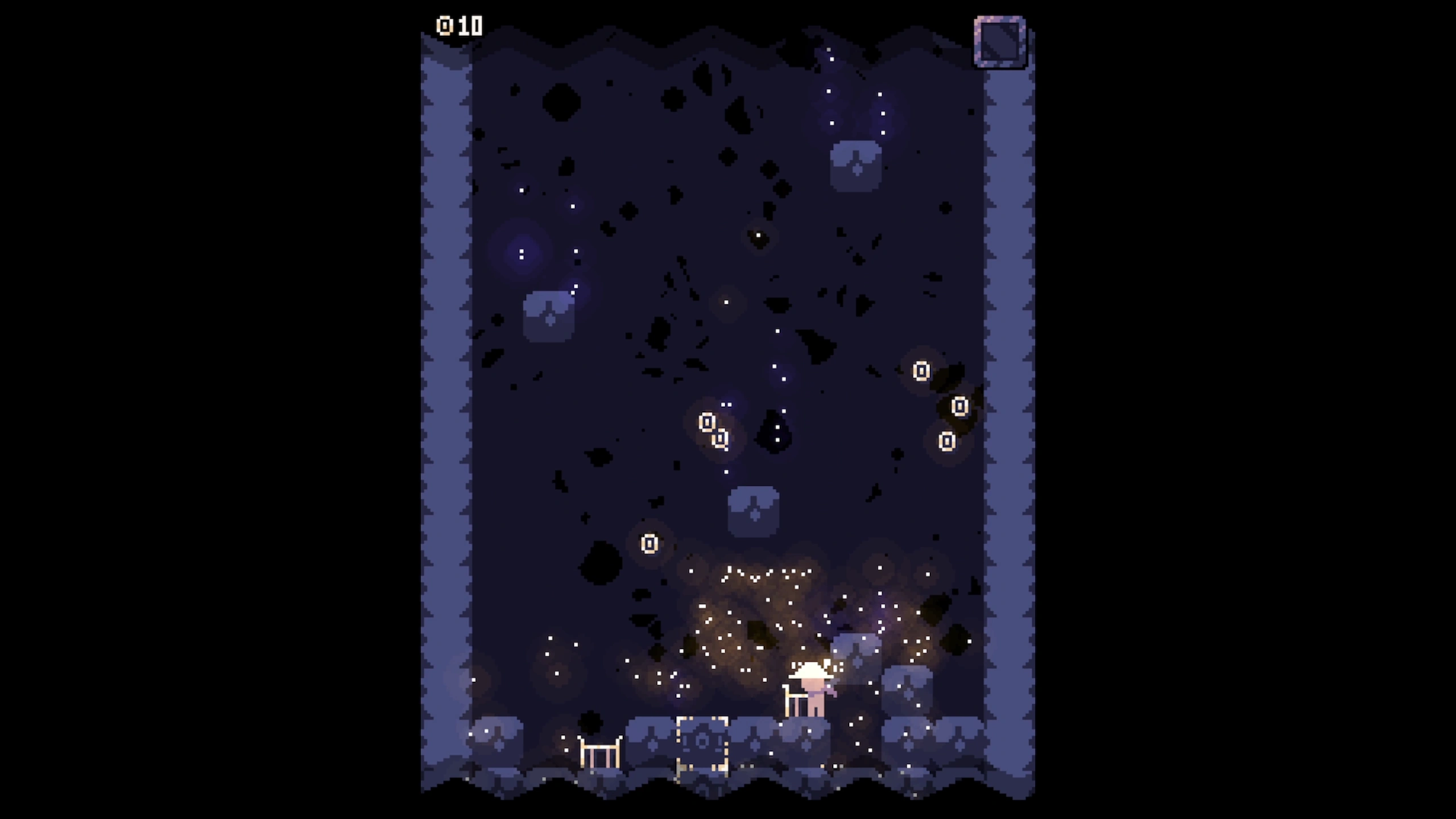
Rocks keep falling on my head. They hurt. As in, really hurt. So much, in fact, that a single one is enough to end my existence. But then I reappear seconds later in a world reverted to a previous state, and what do I do? I repeat the cycle. Maybe this time I’ll do better and acquire more mysterious currency in this survival platformer… until I inevitably fall victim to yet another Cavyn.
There’s simple and there’s basic. One describes Cavyn while the other is a programming language. But seriously, it is actually a relatively simple game – does that mean it’s not fun though? Well, that depends on where your interest might lie. How does (double) jumping in a cramped 2D environment not all that different from the space within something akin to Tetris is played, dodging falling blocks and bonking cages for some peculiar form of currency – maybe even the odd consumable item if you’re lucky – sound?
If you’re still here, still reading this, great. Let’s continue then, for while there isn’t a whole lot to the experience, Cavyn does contain a sliver of hidden depth. It wasn’t enough to keep me engaged for more than a dozen or so minutes, although I never was much of a score-chaser, and that does seem to be the focus here. At least, I’d say so, except the lack of anything remotely resembling a leaderboard does make me wonder if that is actually the case. One’s score isn’t even saved upon dying. It’s shown, but only until you restart. Guess we’ll just have to rely on screenshots for bragging rights (because there’s definitely no easy way to modify one such).

Another puzzling aspect is that next to nothing is explained. Ever. I’m sure most players will quickly realize that pressing up or space jumps, but like the controls, everything in Cavyn is taught through trial and error. What do the consumables do? Use one – provided you don’t simply miss the briefly shown text telling you how – find out, and then… well, make a mental note of the symbol. For those whose effect is immediately apparent, anyway, which is only one or two of them. I’m still genuinely confused as to what purpose creating a white frame around a column of blocks serves, for example. Which is a thing.
There’s a logical explanation for the whole thing being slightly barebones in terms of directing the player, however, as it was made in under 48 hours for the 12th Alakajam. Besides, none of what it lacks genuinely detracts from what is a simple, yet enjoyable experience; even more so for the arcade crowd.
